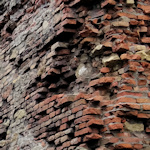
Some argue that Vienna’s city walls (the Stadtmauer) were really built during the Third Crusade at the 1191 siege of Acre in what is now Israel. Oh, yes, there’s a story to tell…
- First city walls date back over 800 years
- City fortifications partly destroyed by Napoleon
- Almost completely destroyed by the 19th-century authorities to free up land for urban development
- You can still see remnants around the city centre
- Book a historical walking tour* in Vienna
- See also:
The history of the city walls
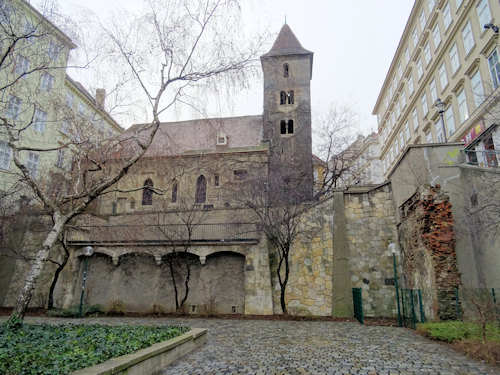
(Ruprechtskirche and old city wall)
So, cast your mind back to Acre in 1191…
After the crusader victory, a bit of an argument broke out about ranks and rights that allegedly ended unpleasantly when England’s King Richard I (the Lionheart) had the banner of Leopold V (Duke of Austria) pulled down from the ramparts of the conquered city.
Leopold left in a huff, presumably leaving the English to snigger and gloat at the backs of the departing Austrian soldiers. Which was probably not such a good idea as it felt at the time. Because…
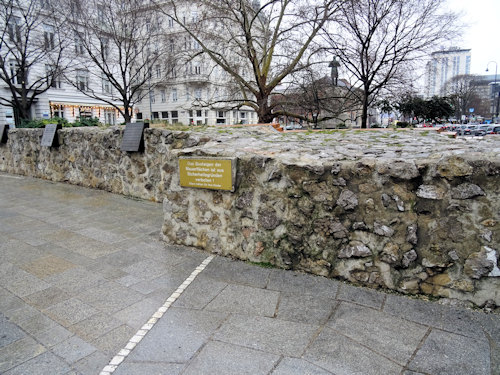
(Old city walls at Stubentor)
A little later, King Richard found himself on his way home to deal with his rebellious brother, John. With the French ports closed to him, he put ashore near Venice and made his way overland.
Probably not Richard’s greatest tactical decision, since this route took him through Austria.
And you can guess what happened next.
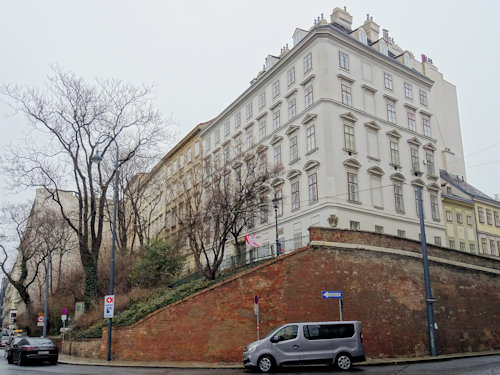
(The Mölker Bastei fortification remnants)
Travelling incognito in a small group, the English king raised the suspicions of the locals by using an unfamiliar gold coin while staying in an inn near Vienna (or so the story goes).
Incognito became very much…cognito.
Leopold promptly threw Richard in prison, no doubt accompanied by sarcastic comments about whose flag is flying now.
The Austrian duke then turned his prisoner over to the Holy Roman Emperor Henry VI, who ransomed him off for a sum so unfeasibly large that England had to introduce a special tax to pay it.
Leopold’s share of the bounty built the first true city walls (Ringmauer) of Vienna, the successor to the Burgmauer that enclosed the early medieval settlement.
The Duke’s finder’s fee also built the city walls of Enns. And the city walls of Hainburg. And the town of Wiener Neustadt. And the city mint. So, yes, it was a lot of money.
The ransom didn’t do Leopold much good personally, though.
Since crusaders enjoyed a kind of diplomatic immunity at the time, the Duke’s actions against Richard saw him excommunicated by the Pope, and he died soon after at the end of 1194.

(The 1683 siege of Vienna as painted by Franz (Frans) Geffels, 1683-1694; press photo: Birgit and Peter Kainz, Wien Museum. You can see the painting and further info on the siege and fortifications in the Wien Museum permanent exhibition)
The new walls in Vienna were three times the previous size and served the city well until the Turkish siege of 1529 highlighted their shortcomings; they were subsequently enhanced and replaced by new fortifications across future decades.
These proved pretty resilient and held fast, for example, at the famous 1683 Ottoman siege.
Then Napoleon turned up with a big reputation and an even bigger army.
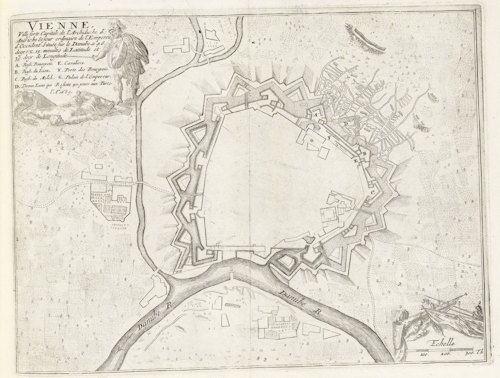
(Map of the fortifications around 1695. Image courtesy of the Rijksmuseum)
The French Emperor wandered into town in 1809 without much resistance. And, like a spoilt teenager, he knocked down a fair bit of the walls when he left.
By the middle of the 19th century, nobody really believed the huge fortifications and the area (Glacis) kept relatively clear before them had any meaningful military value.
In fact, the raised walls served as a nice spot for an evening stroll or a summer concert by the likes of the Strauss family. All of which sounds rather nice.
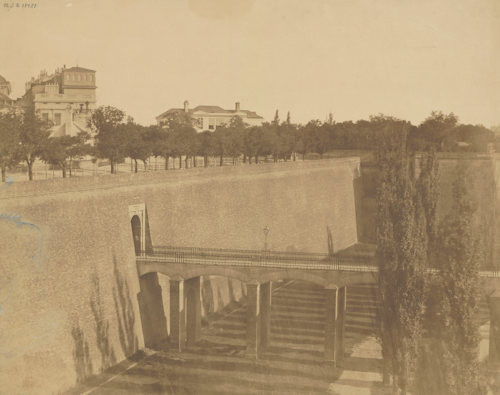
(Part of the old city wall with an entrance gate; photographed by the k. k. Hof- und Staatsdruckerei Wien in 1858, Wien Museum Inv.-Nr. 10481; reproduced with permission under the terms of the CC0 licence)
Unfortunately, these leisure areas took up a lot of prime real estate in what had become a rapidly-growing city. And large walls with few gates make travel into and out of a bustling metropolis rather tiresome.
In 1857, the Emperor finally ordered the dismantling of the walls and freed up the Glacis for construction.
This act lead to the building of today’s Ringstrasse boulevard and the many city palaces and other wonderful buildings that flank it.
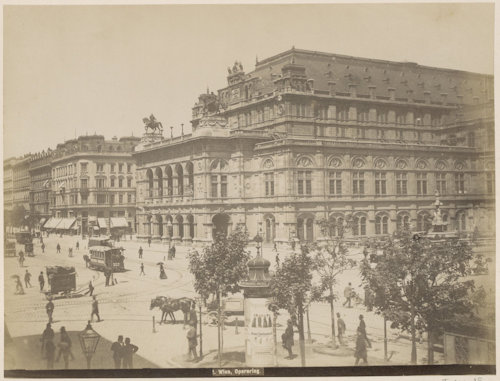
(The new Ring boulevard at the end of the 19th century, created on the Glacis and with the 1869 Staatsoper opera house behind it. Image courtesy of the Rijksmuseum)
Where to see the city walls
There is hardly anything left of that old Ringmauer. What you do see are a lot of names that hark back to the fortifications.
Tor means gate in German. And so, for example, subway stations like Schottentor and Stubentor remind us of where gates into the city were once located.
Bastei means bastion, and such streets as Mölker Bastei, Stubenbastei and Schottenbastei owe their names to their original purpose.
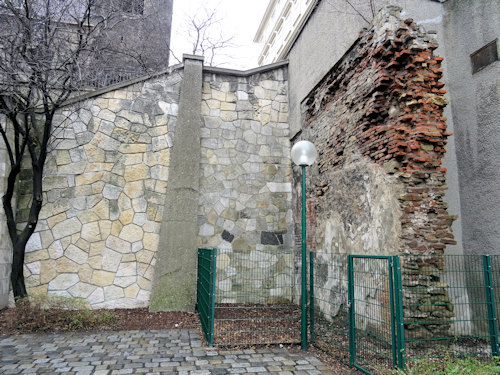
(Close up of the section of old wall under Ruprechtskirche)
A few remnants of the walls still exist, though. For example:
- Stubentor: a preserved section of the wall remains on the west side of the station, with the previous position of the fortifications also marked in the paving
- Ruprechtskirche: bits of this church date as far back as the 11th century or earlier, and below it you can still see parts of the old city wall it was built above
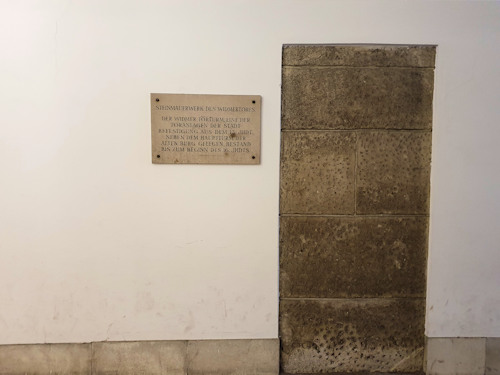
(Remains of the Widmertor)
- A small remnant of the Widmertor gate in the Hofburg palace complex as you walk through from Heldenplatz to Michaelerplatz
- Mölker Bastei: I’m not sure how original the brickwork is, but you can at least get a good feel for the proportions of some of the fortifications. One of Beethoven’s old residences sits on top of it
- Palais Coburg Hotel Residenz: one of Vienna’s most prestigious hotels with parts of the old city walls built into its architecture (go into the foyer and look left, for example. Astonishing!)